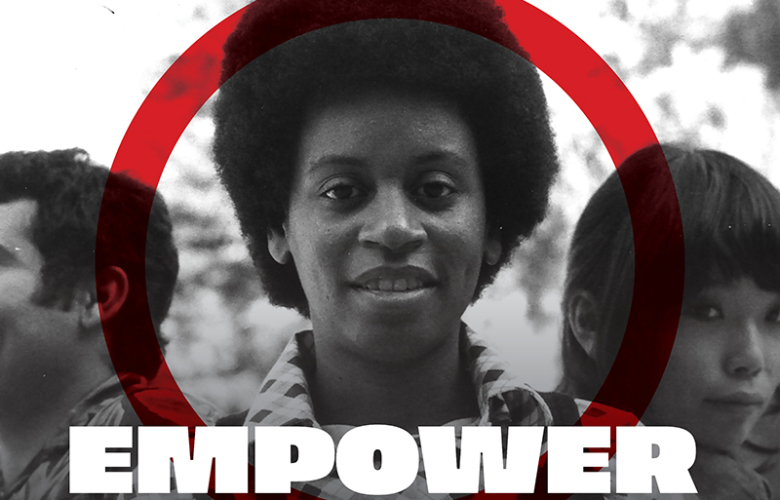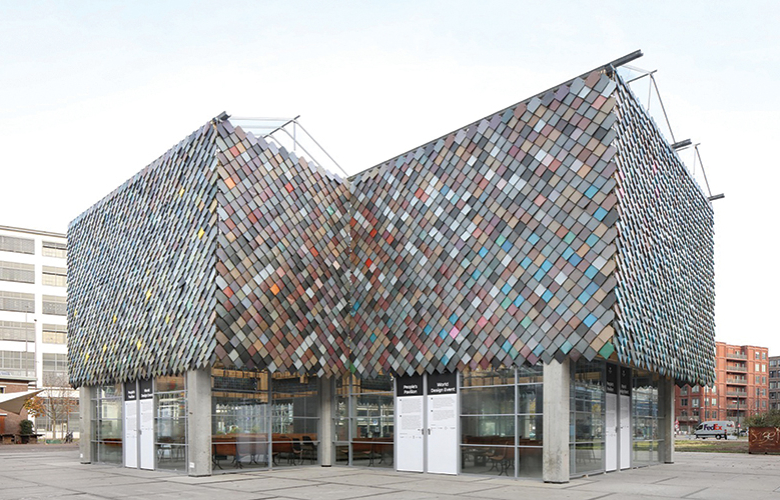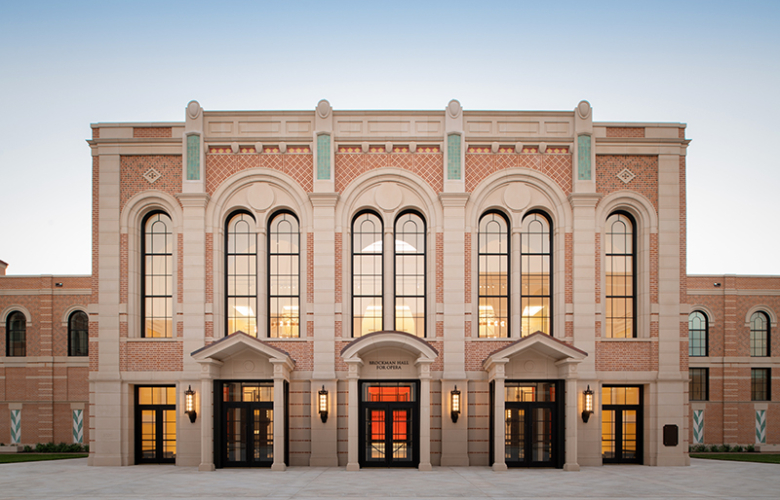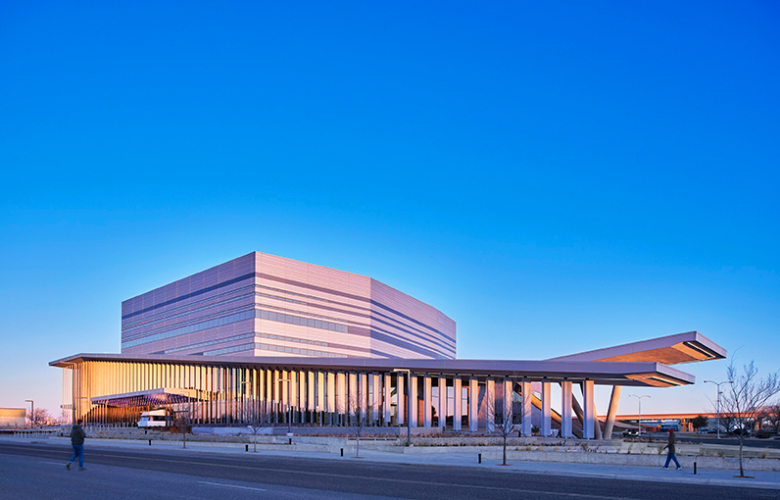
The Adobe Paradox
ONCE A BUILDING MATERIAL OF HUMBLE ECONOMY USED BY AUTOCHTHONOUS PEOPLES OF THE SOUTHWEST, ADOBE HAS BECOME FASHIONABLE AMONG MARFA’S AFFLUENT NEWCOMERS. HERE, A STUDENT WITH ROOTS IN THE TOWN’S MEXICAN-AMERICAN COMMUNITY AND AN ARCHITECT PRACTICING IN THE REGION DISCUSS THE BUILDING BLOCK’S COMPLEX CULTURAL CONTENT.
Personal essay by Beck Andrew Salgado
Photography and notes by Stephen “Chick” Rabourn, AIA
When my family settled in the United States from a small town in Chihuahua, Mexico, they did so in Marfa. Nearly since the town’s appearance on the map in the 1880s as a water stop for trains, my family has been there — we even have a street named after us. My father grew up partly in Marfa, and he took me out west to experience the region in all its glory as frequently as possible.
My grandfather is a born-and-raised Marfan who bought an adobe house many years ago primarily because of how cheap it was. He has since seen a nearly 500 percent increase in his taxes. He pays more in taxes for his Marfa home than for the suburban house in Pflugerville, where he currently lives. As adobe represents an obvious symbol of indigenous, Mexican, and Mexican-American peoples in the Southwest and Northern Mexico, its co-opting in Marfa by out-of-town elites, most of whom are white, is sparking a conversation about how this particular material should be respected in the United States.
In the late 1800s and early 1900s, Mexican migrants started to settle in Marfa because of its proximity to the homeland and its affordable housing. Most of the Mexican people elected to build adobe houses because it was what they knew, and it was easy and cheap to source the materials locally. Adobe is merely a mixture of dirt, straw, and water that is formed into blocks and cured in the sun. Many early adobe homes in Marfa were made from earth dug up from the backyard.
Meanwhile, Marfans who had come from farther east in the United States preferred to build their houses out of lumber or brick, more expensive materials that had to be imported by rail. This created a dichotomy in which the poor Hispanic people lived in adobe while monied whites did not — an arrangement that today, ironically, is undergoing something of an inversion. This arrangement, along with some other run-of-the-mill pre-Civil-Rights-Act behaviors such as segregated establishments, naturally led to occasional friction between white and Mexican communities, but its effects were mostly confined to dictating what kind of house you lived in or which side of town you lived on. However, violent encounters, such as the Porvenir massacre of 1918 in western Presidio County, illustrate the precarious nature of cultural relations in the region even well into the 20th century.
Before I ever knew who Donald Judd was or why everyone in town was obsessed with James Dean, Marfa represented family to me. It was where I would go to see uncles or cousins visiting from other parts of the country. Being a Mexican-American from a family that aggressively assimilated in the ’60s and ’70s — my grandfather worked in education, and, because of this, he felt assimilation was important to success — my connection to my culture often felt tenuous growing up. However, Marfa always represented the most significant and intimate ties that were left to my Mexican heritage. When there, I would listen to Spanish music while eating chile verde con carne, and our visits were also a chance for my father to teach me more about my family’s past as we drove around the Chihuahuan Desert.
As I have grown older, each time I go back to Marfa I feel less and less of that sense of culture I used to enjoy as a kid. I spent the better part of the last year living in my grandfather’s home there, and, while the adobe walls that surrounded me will always be inextricably tied to family, the changes happening on the other side of those walls had me vexed. For the months I was there, I felt myself routinely “code switching,” internally and externally, between the binary aspects of my cultural identity.
While I was enjoying the “new” Marfa, the feeling that a sacred tie to my family and culture was possibly slipping away due to the town’s evolution scared me. And so it was that during that visit I identified what I now call the “adobe paradox.” The town where my family built its life in America and spring-boarded into the American lifestyle would no doubt be just another dot on the map, or even less, if it had not been for the cultivation of the Marfa art scene and the influx of people coming to the town because of it. Yet this same influx is accelerating the eradication of Mexican culture from the area.
This sounds pretty straightforward, except when you consider that the very force that is sustaining the framework of where my family is from is also eroding its foundation. In essence, Marfa is staying on the map, but the town that I knew it as is rapidly fading. This is not unlike my family’s decision to assimilate: It was predicated on the idea that doing so would help us become successful, but the cost of this assimilation was a subdued relationship with our Mexican roots.
Gentrification has seeped into the adobe blocks of Marfa. For people from the area, like my family, the town and the material represent our first experiences in America, and it could also represent one of our last physical ties to the beautiful and proud culture we left behind.
Beck Andrew Salgado is a journalism student at Marquette University in Milwaukee, Wisconsin, and a contributor to the Big Bend Sentinel.
VERNACULAR
The older homes are not laid out in suburban typologies. They crowd the front property lines and often touch each other on the sides. They started small and were added onto, over time, creating L-shapes or courtyards that span entire lots, a technique far more efficient than the now-imposed 30-ft setback that defines an isolated, quasi-suburban order of driveways and landscaped-but-abandoned front yards. Frustratingly, this is now considered “traditional” and “family-friendly” by many locals, while courtyard schemes are banned.

The original adobes were primarily self-built within a community that understood the basics of building in a region unencumbered by building codes. Some have foundations; many do not. Room dimensions were controlled by the stabilizing force of corners and the spans of 2×4 joists — roughly 12-ft square — with modest door and window openings centered within. There are no hallways. Starting with a two-room module, families expanded in whichever direction they could with whatever materials were available: first, adobe; then, concrete block; then, wood framing in a cascade of parapets and eaves until the ceilings become too low to keep going. Work sheds and carports were built at the back of their lots, now converted into studios and casitas by the current owners.
Front porches are essential, decorated with furniture, Catholic icons, and kitsch objects, and kept immaculately clean by those still living there who maintain a strict code of ethics about keeping up appearances. Weeds are the enemy. Older residents meticulously pull up fresh sprouts by hand or with hoes while working people wield noisy gasoline-powered trimming machines that kick up clouds of dust. In the evenings, families gather on their porches or in their side yards and wave at passing vehicles and pedestrians, familiar or not.

While the adobe layout expanded over time, it never really evolved and instead was subsumed by postwar suburban ambitions. The original adobes are reluctant relics not easily renovated or expanded. Many were abandoned for manufactured housing.
JUDD AND THE NEXT WAVE
When Donald Judd arrived in Marfa in the early 1970s, there was no particular mystique attached to adobe as there is in northern New Mexico, where the Pueblo Revival thrilled East Coast tourists and West Coast commune builders alike. In Marfa, the material was used in the pragmatic and uncelebrated way that it is in northern Mexico, and that’s how Judd used it as well. By then, Marfa’s boom times had long since ended and people were building with manufactured materials, if at all, which is why there were stacks of adobes unused after the demolition of two local motels. Judd bought the material to build the nine-ft-tall walls surrounding La Mansana de Chinati, more commonly known as the Block. “Marfa is made mostly of adobes, but the town had forgotten that when I started using them. It was the obvious material,” he wrote later in his essay “Marfa, Texas.” Judd brought in Mexican tradesmen who still regularly worked with the material. He went on to dig pits on the property to build interior walls. The adobes used for the site walls of the Chamberlain Building and the Locker Plant were brought up 60 miles from Presidio. Those adobes are degrading more quickly than the ones from Marfa, which has the effect of producing a distinctive negative imprint when joined with cement-stabilized mortar joints.

Newcomers since have had no hang-ups about adobe, which now represents a regional authenticity that distinguishes it from buildings in New York, Los Angeles, or Houston. Adobe embodies an authenticity that bestows its own sense of status. There is a note of progress here from the racial and cultural biases of the past when adobes were disparaged as primitive.

In the late 1990s and early 2000s, a handful of arts-minded individuals on tight budgets took cues from Donald Judd’s restrained and practical attitude toward renovating buildings and quietly settled into inexpensive adobes using corrugated roofing and neutral color schemes over existing wood windows and rough stucco. When the fashion for minimalism became a signifier of taste among urban dwellers with second or third homes, the treatments became more severe. Then it was necessary to vault the ceilings, swap in aluminum casements, upgrade the roofs, and add on. The low-key color schemes and tasteful landscaping disguised the underlying transformation of family homes to pricey pieds-a-terre. Subsequent generations of home buyers paid prices well above those sustained by the local market. Around 2017, the State of Texas took notice and demanded Presidio County bring its assessments up to the new market values, which occurred across the board for all Marfans and caused a massive spike in tax bills for homes not protected by homestead or age exemptions. A new activism emerged in defense of long-time locals who want to stay in their homes and hope to keep them in the family for following generations. But because the Texas system relies heavily on property taxes, that will be increasingly difficult over time if Marfa continues to be a popular market — which seems likely, given the number of tourists and the amount of publicity the town continues to attract.
RUINS
Marfa is strewn with the slow erosion of its past. A melting mass of earth and stucco is evidence enough that someone no longer living worked their arms and abdominals mixing and forming thousands of bricks by hand. Most likely, the same person and their family lifted each one of those bricks into place until stacks of dried mud under a roof became a home.

People were born in those homes. The old-timers still point at the places where they and their parents were born. Sometimes, that place is an empty lot. The families built their own houses, delivered their own children, and cultivated gardens and livestock on their properties. It feels humane, just like the beauty of walls melting back into the earth in slow motion over decades, a sped-up geology. When the lots get scraped, they go quiet. The murky echoes of human occupation dissipate and fall out of communal memory.

As property taxes rise, the families that own these lots will eventually be pressured into clearing and selling them for redevelopment, not necessarily a bad thing for a remote small town hemmed in by ranch land and currently unable to grow beyond its borders. With a trickle of new families moving to town, maybe some of the dynamic energy and sense of community can be re-established within the surge of second homes and vacation rentals currently dominating the market. Either way, I will miss the ruins when they’re gone.
Stephen “Chick” Rabourn, AIA, is an architect in Marfa.
Also from this issue





